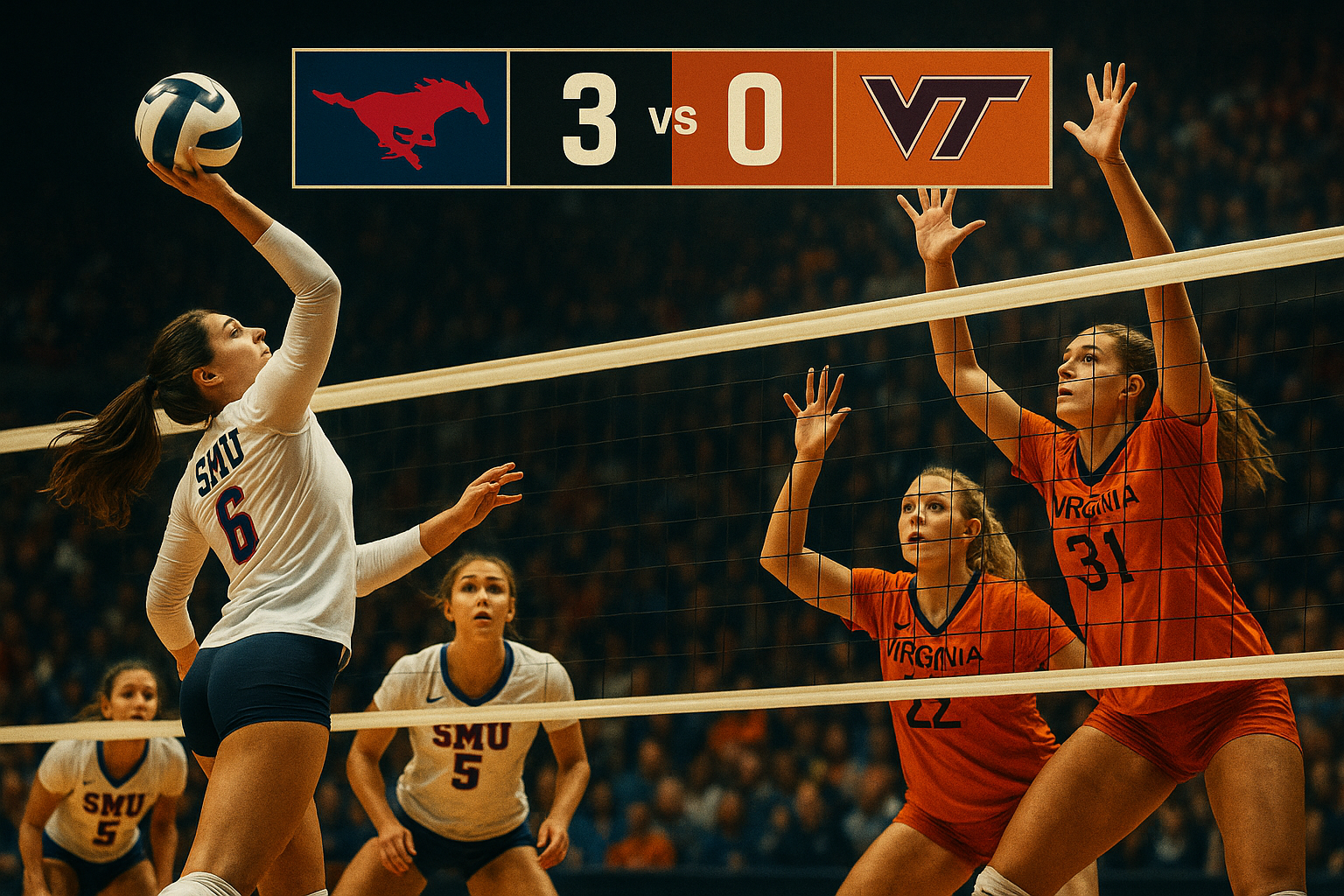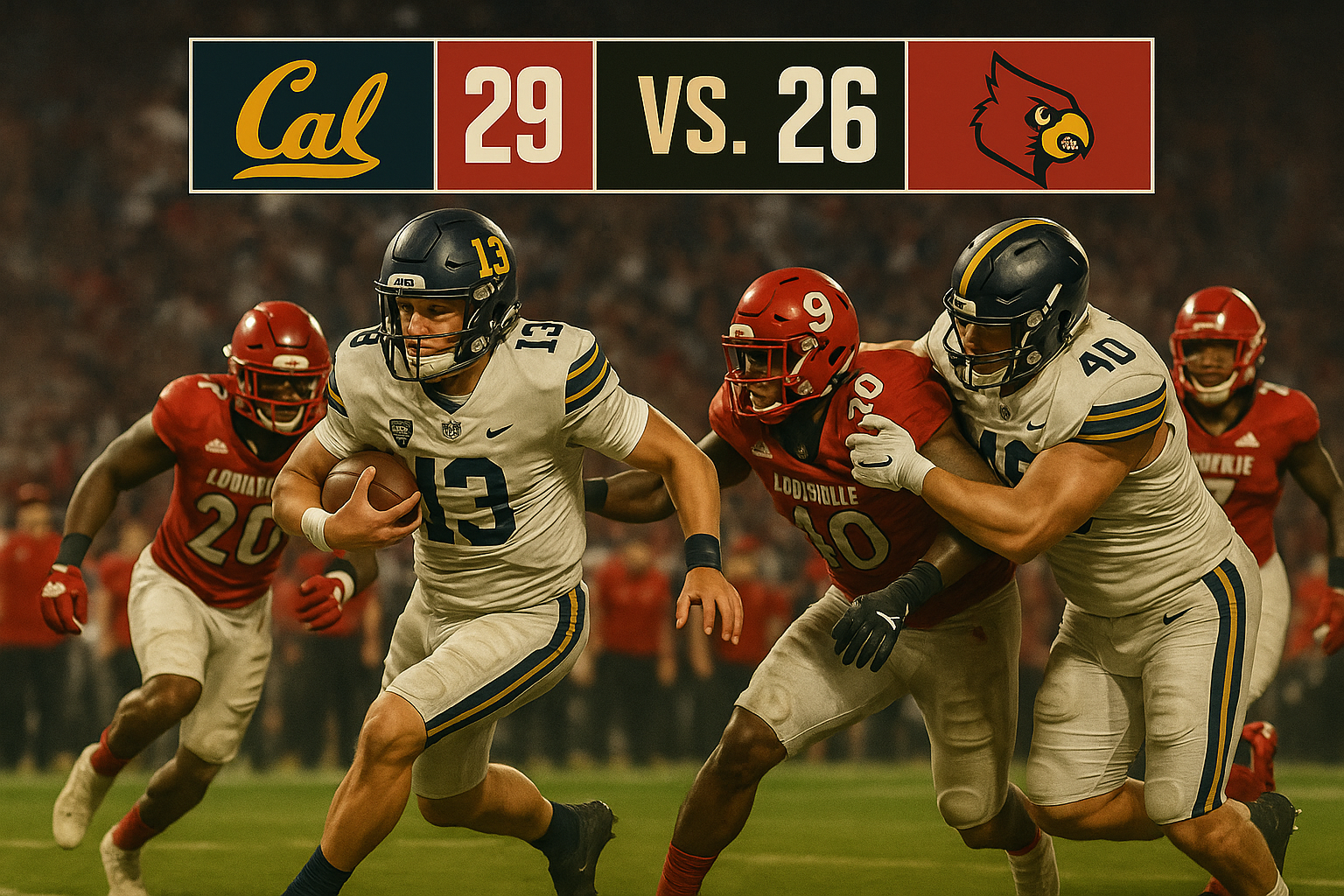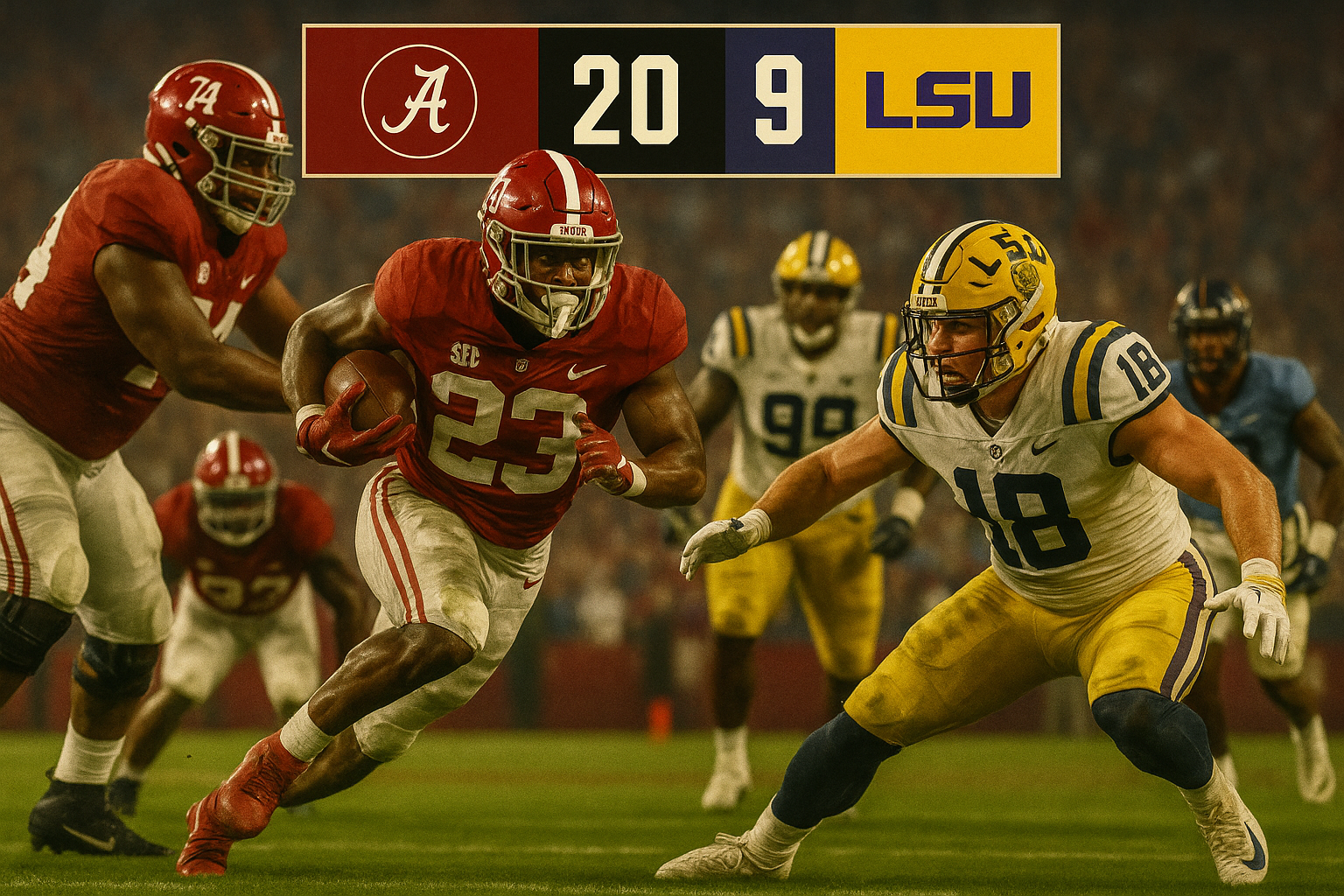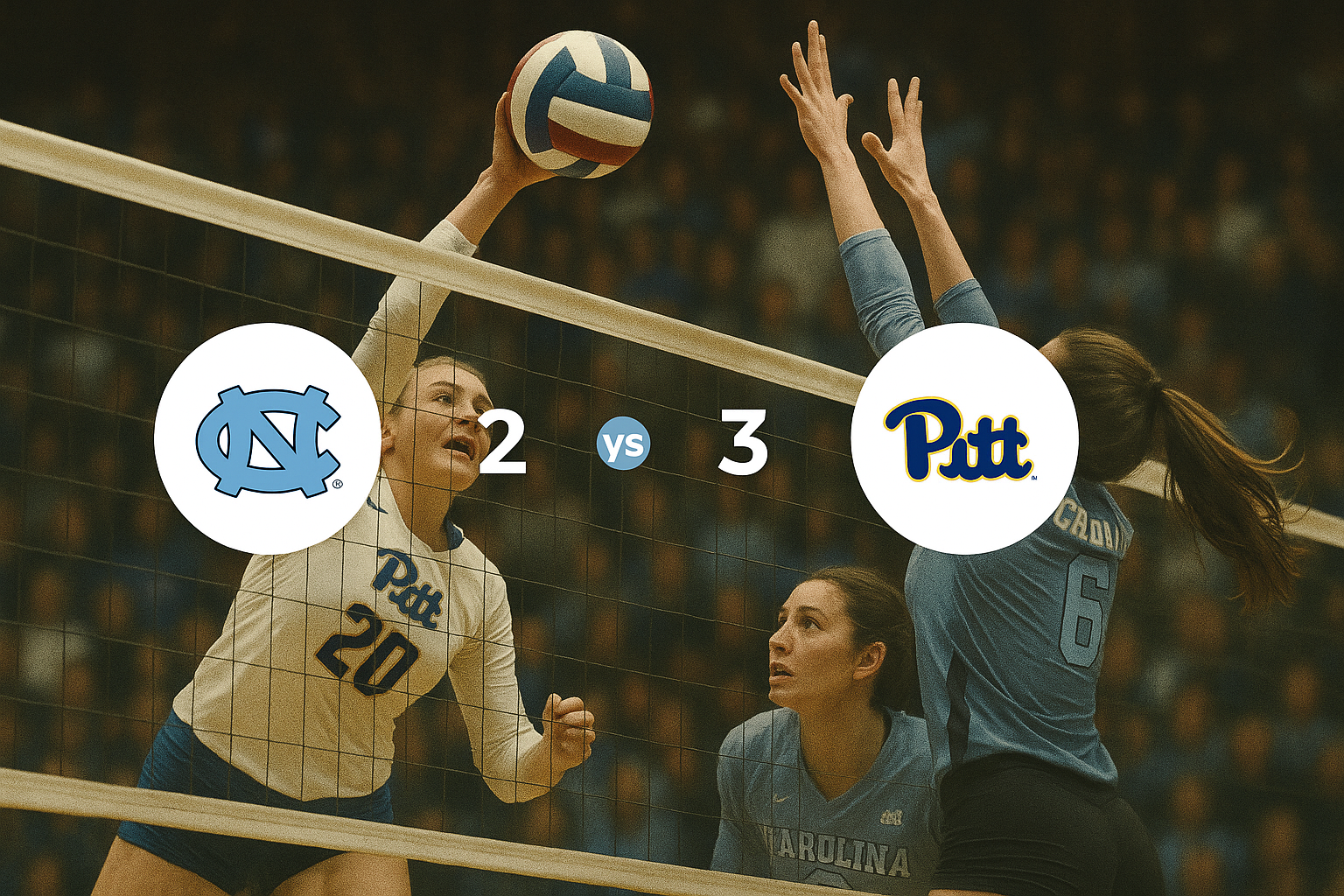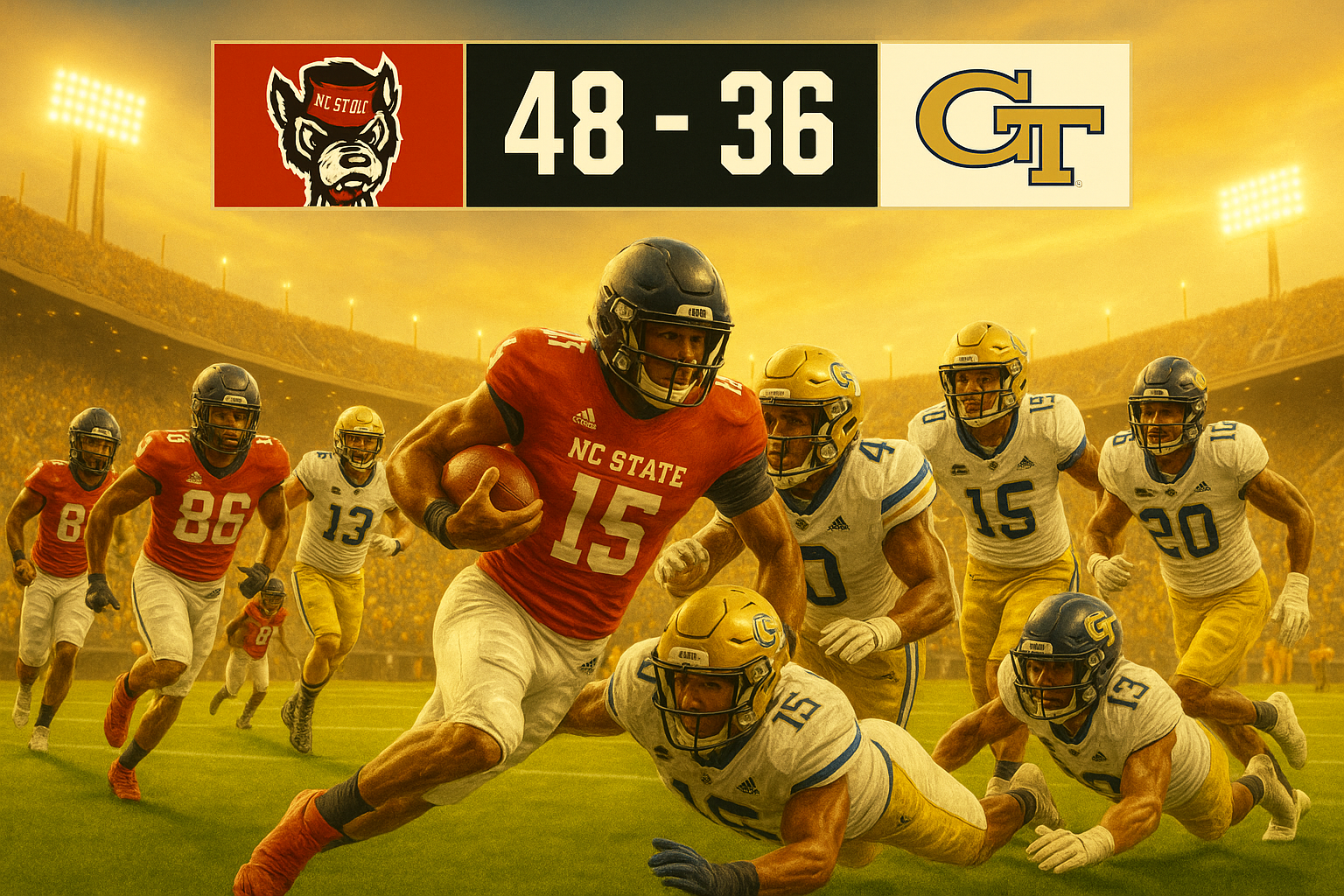Georgia Tech Sweeps Clemson to Extend Dominance in Rivalry Series
Fiedorowicz and Mambu Lead the Yellow Jackets to Their 17th Straight Win Over the Tigers
CLEMSON, S.C. — The Georgia Tech Yellow Jackets capped off their five-match road swing with an emphatic 3–0 sweep (25–23, 25–17, 25–18) over Clemson on Friday night at Jervey Gym. Behind standout performances from Anna Fiedorowicz and Mimi Mambu, Georgia Tech improved to 14–10 overall and 9–6 in ACC play, securing its 17th consecutive win over Clemson dating back to 2015.
The Yellow Jackets dominated offensively and defensively, posting their second-best attack percentage of the season (.394) and finishing with 52 kills and 51 assists, both among their top three marks in three-set matches this year. The victory not only strengthened Tech’s position in the ACC standings but also showcased the team’s depth, discipline, and composure under pressure.
Fiedorowicz and Mambu Power the Attack
Junior outside hitter Anna Fiedorowicz was nearly unstoppable, recording 16 kills on a blistering .500 attack percentage, setting a new career high. It marked her 12th double-digit kill performance of the season and continued a torrid stretch of consistency over the past month. Fiedorowicz also added three solo blocks, showcasing her all-around impact.
Alongside her, sophomore Mimi Mambu delivered one of the best outings of her young career, registering 14 kills on 27 swings with only one error, hitting .481 — another career best. It was her 12th double-digit kill performance of the season. Together, Fiedorowicz and Mambu accounted for more than half of Georgia Tech’s total kills, setting the tone from the opening serve.
Freshman Noemi Despaigne continued her upward trajectory with 10 kills, eight digs, and two blocks, matching her career high in digs. Her steady contributions added balance and versatility to the lineup.
Setter Heloise Soares directed the offense with precision, dishing out 46 assists, her second-highest total in a three-set match this season. She also contributed six blocks and six digs, tying a career high in blocks. Soares’ leadership kept Tech’s rhythm intact even as Clemson applied early pressure.
Set One: A Comeback Fueled by Composure
The opening set tested Georgia Tech’s poise. Clemson jumped out to a 9–2 lead behind an 8–0 scoring run, powered by Mia Moore and Khaya Gordon. The Tigers hit .314 in the frame — their best of the night — but Georgia Tech refused to fold.
Fiedorowicz sparked the rally with nine kills on 16 swings, while Soares racked up 17 assists in the set alone. The Yellow Jackets clawed back to tie the score at 18–18 and seized the lead moments later. After Clemson knotted it at 23–23, Tech responded with back-to-back points to clinch the 25–23 win.
Despite Clemson’s hot start, Georgia Tech’s 20 kills to Clemson’s 13 proved decisive, setting the tone for a match that would only tilt further in Tech’s favor.
Set Two: Yellow Jackets Take Control
The second set saw Georgia Tech take command on both ends. The Jackets hit .375 while holding Clemson to .088, dominating the net and dictating tempo throughout.
After jumping to a 12–8 lead, Tech’s blocking and transition play stretched the advantage. A late five-point Clemson run closed the gap, but kills from Mambu and Sydney Pierce sealed the 25–17 win.
Mambu was perfect in the frame, posting seven kills on 10 attempts without an error. Defensively, Bianca Garibaldi led with four block assists, and Soares added three more. The team’s six total blocks in the set neutralized Clemson’s offense and gave the Jackets full control.
Set Three: Precision Seals the Sweep
The third set was Georgia Tech’s most efficient of the match, as the Jackets hit a staggering .652 with just one attack error. Fiedorowicz and Mambu continued to dominate, combining for nine kills, while Garibaldi and Despaigne added timely points to sustain pressure.
Clemson briefly tied the set at 5–5, but Tech responded immediately with a three-point surge and never looked back. After a late timeout with Clemson trailing 17–14, the Jackets closed on an 8–4 run, capped by consecutive kills from Mambu and Despaigne to complete the sweep, 25–18.
Soares recorded 15 assists in the final set, completing her ninth double-double of the season and solidifying Tech’s offensive rhythm to the end.
Tigers Struggle to Contain Tech’s Rhythm
Clemson fell to 16–11 overall and 4–11 in ACC play with the loss. The Tigers showed flashes of potential, hitting over .300 in the first set and above .250 in the third, but they struggled to maintain consistency against Georgia Tech’s relentless tempo.
Mia Moore led Clemson with 11 kills, while setter Katherine Sandt posted her 14th double-double of the season with 29 assists and 10 digs. Despite strong individual efforts, Clemson managed just three total blocks, allowing Tech to dictate play at the net.
Georgia Tech’s Momentum Builds
Friday’s win marked another milestone for a Georgia Tech program that has dominated this in-state rivalry for nearly a decade. The Yellow Jackets now lead the all-time series 45–35 and have won 12 of the last 16 meetings in straight sets.
The sweep also wrapped up a grueling five-match road stretch, during which Georgia Tech went 4–1, further solidifying its postseason credentials. The Yellow Jackets now return to O’Keefe Gymnasium for the rematch against Clemson, which will be streamed live on ACC Network Extra.
Final Takeaway
Georgia Tech’s 3–0 sweep over Clemson showcased a complete, disciplined performance rooted in precision and power. Fiedorowicz’s career night, Mambu’s consistency, and Soares’ orchestration epitomized the Yellow Jackets’ growing balance and maturity.
As postseason play draws closer, this victory reinforces Georgia Tech’s identity as one of the ACC’s most cohesive and dangerous teams — and extends its dominance in one of the conference’s most historic rivalries.
